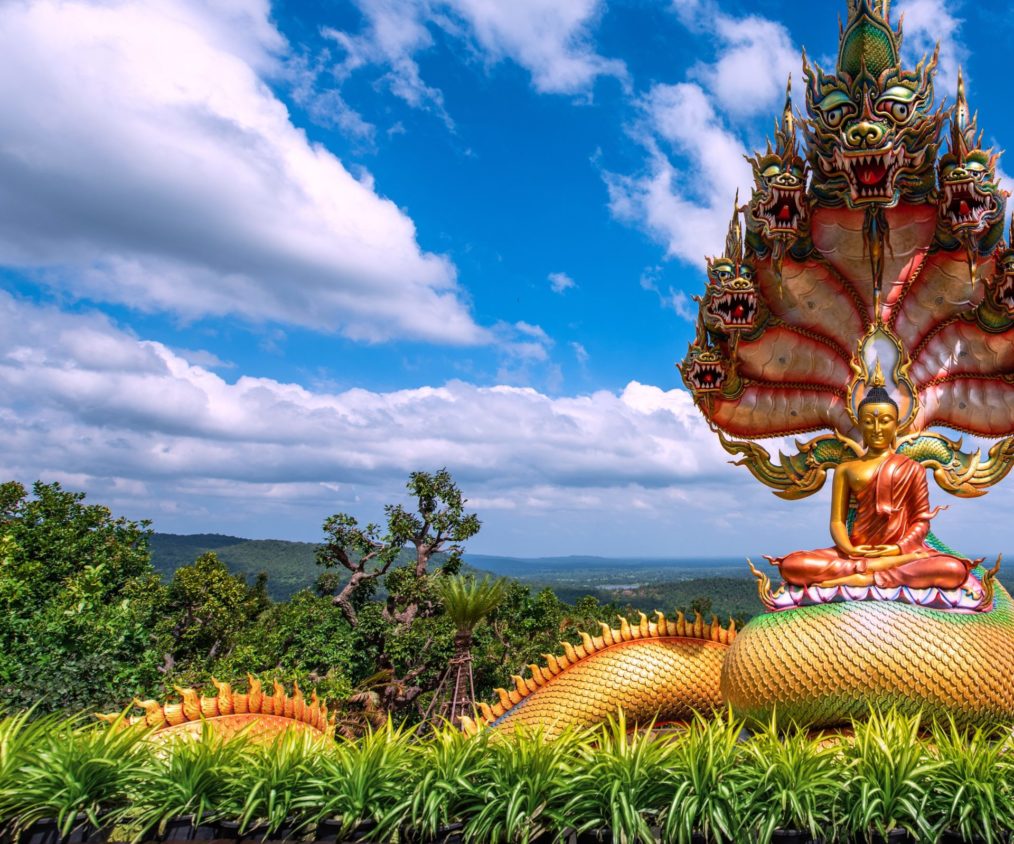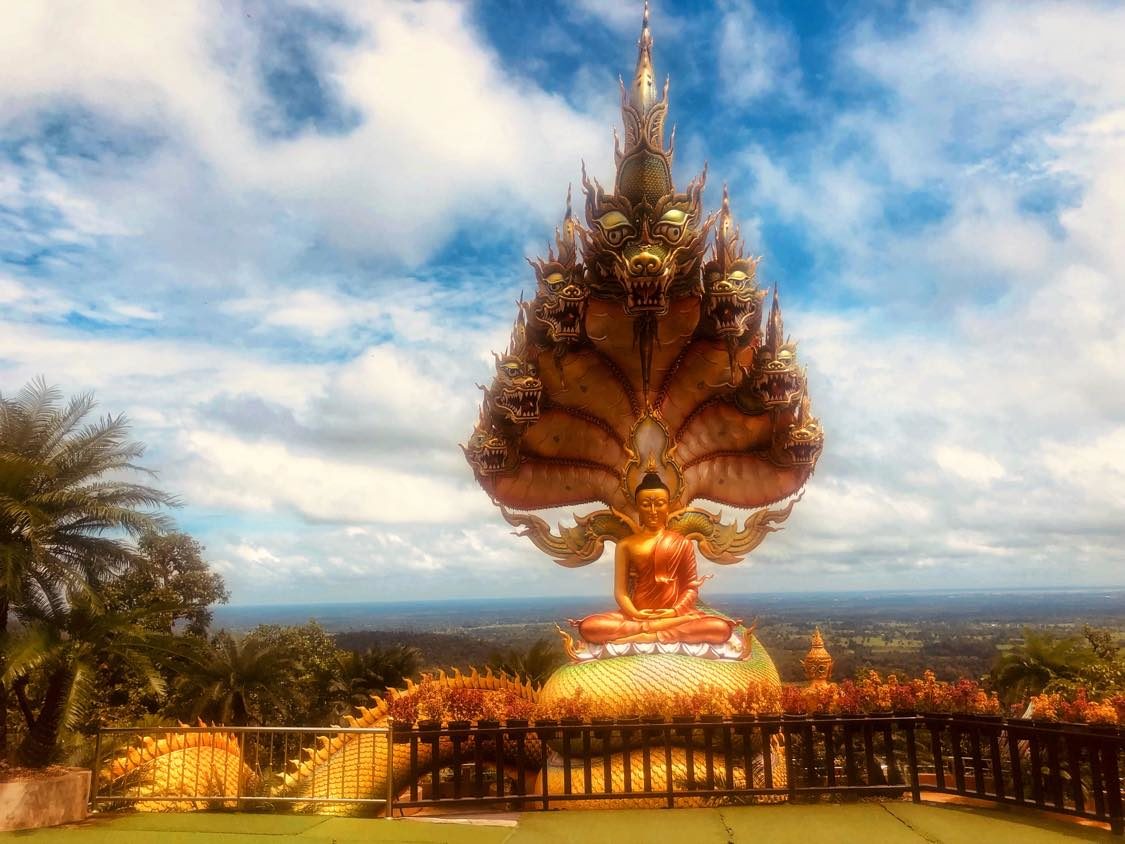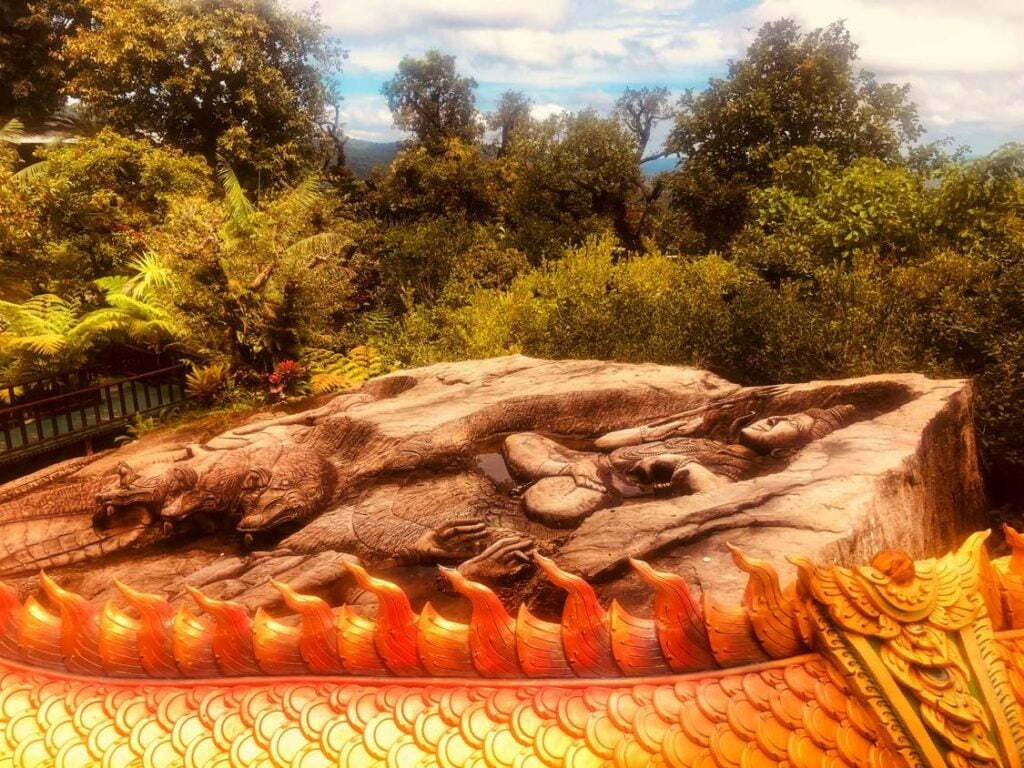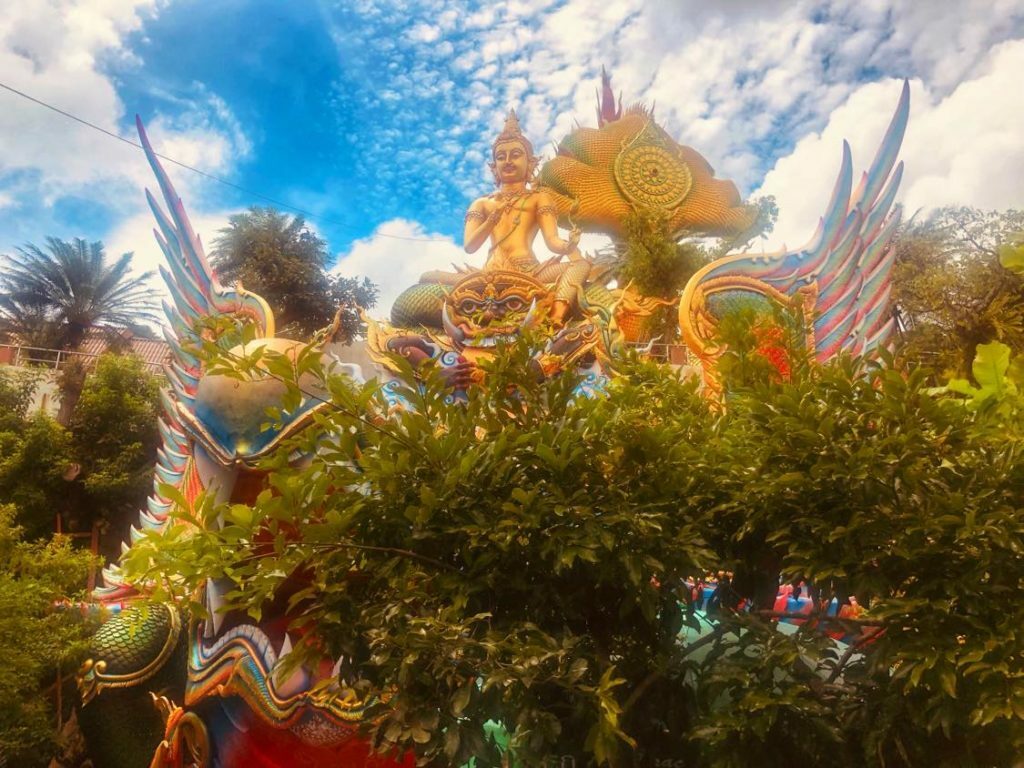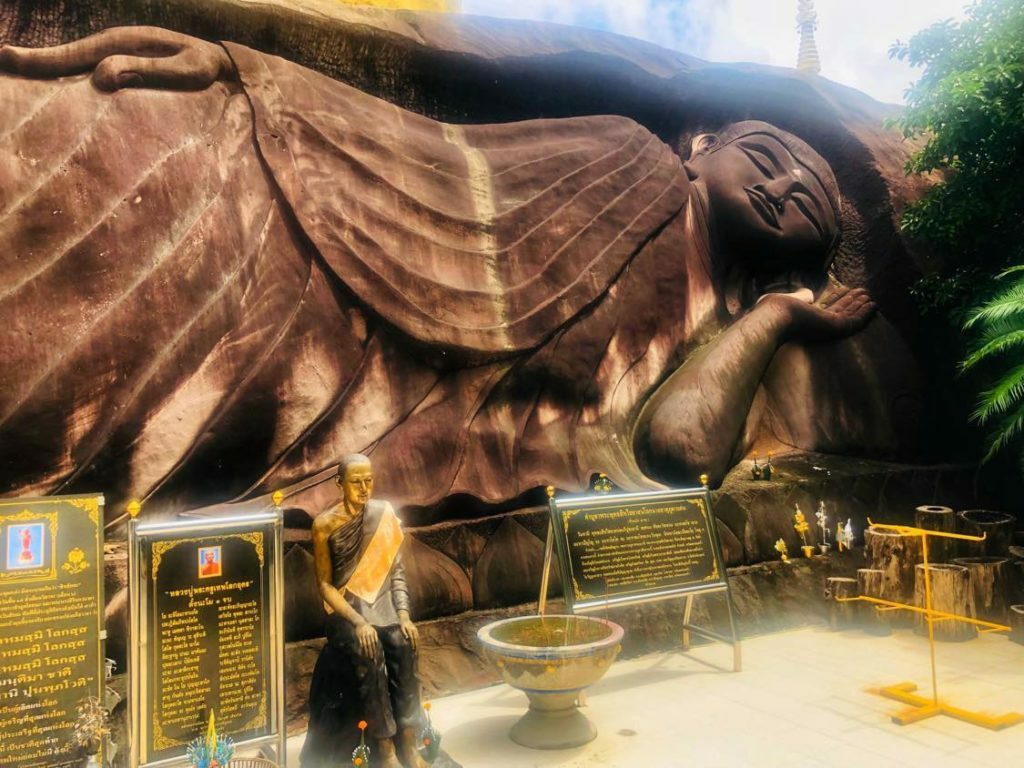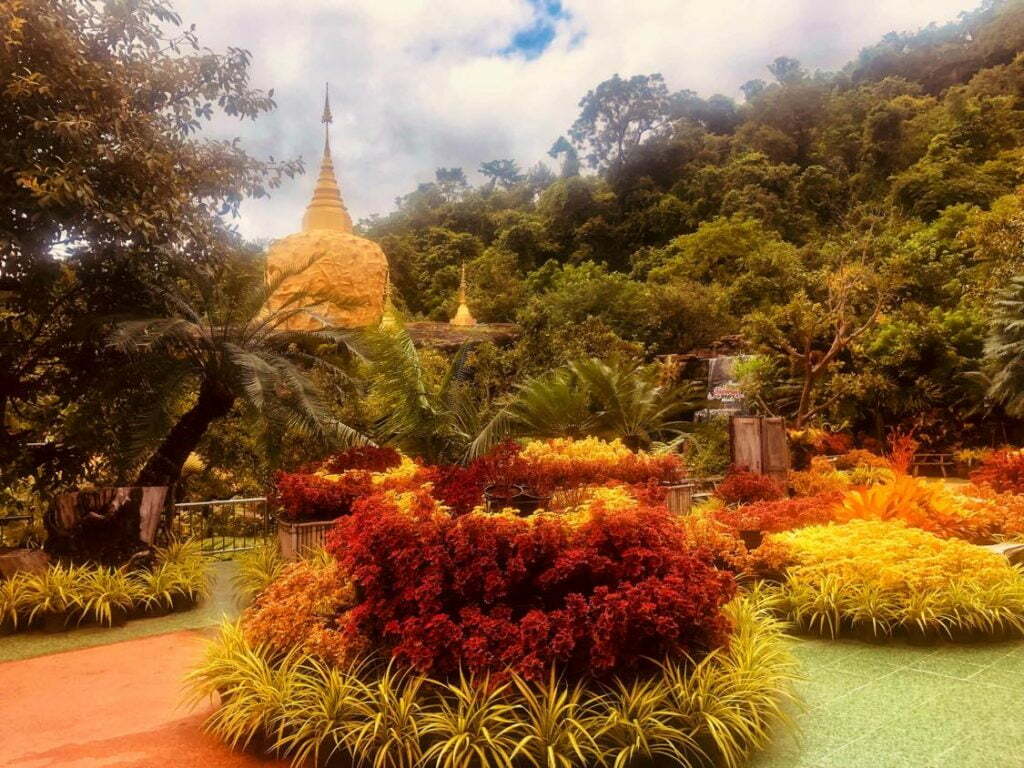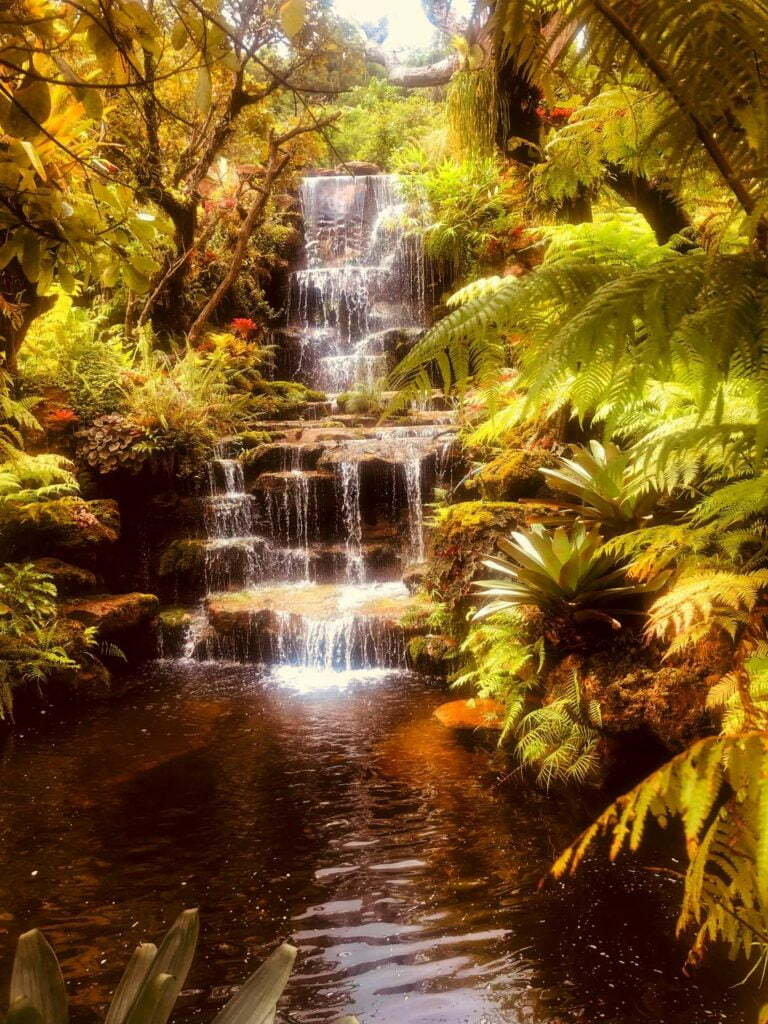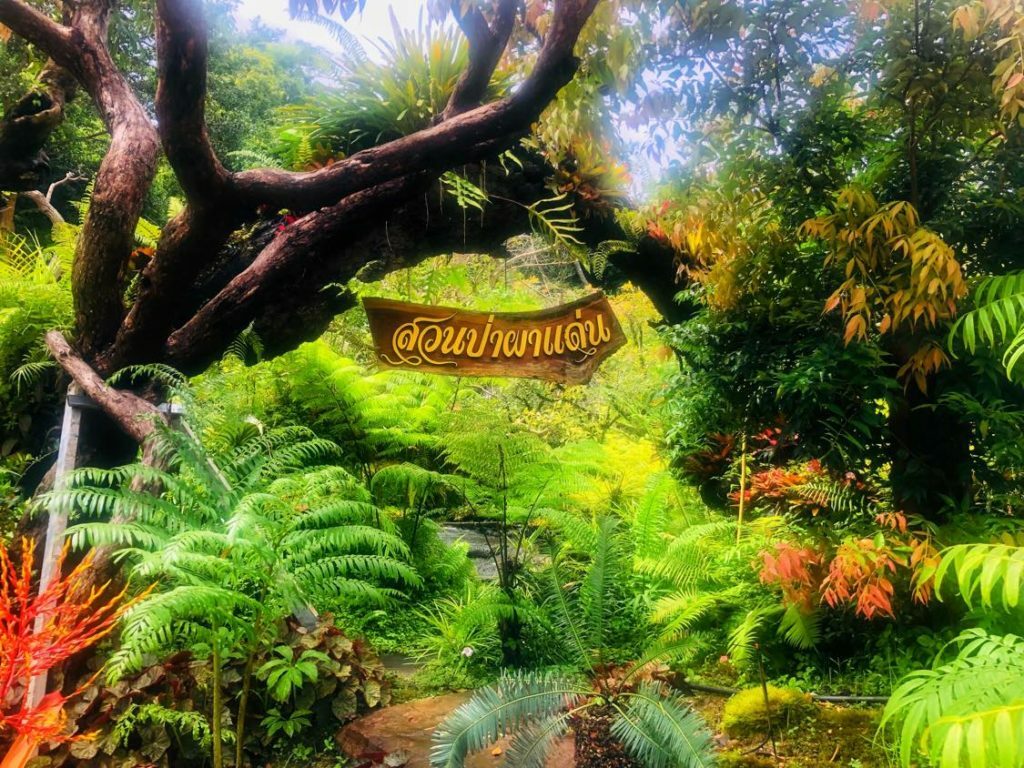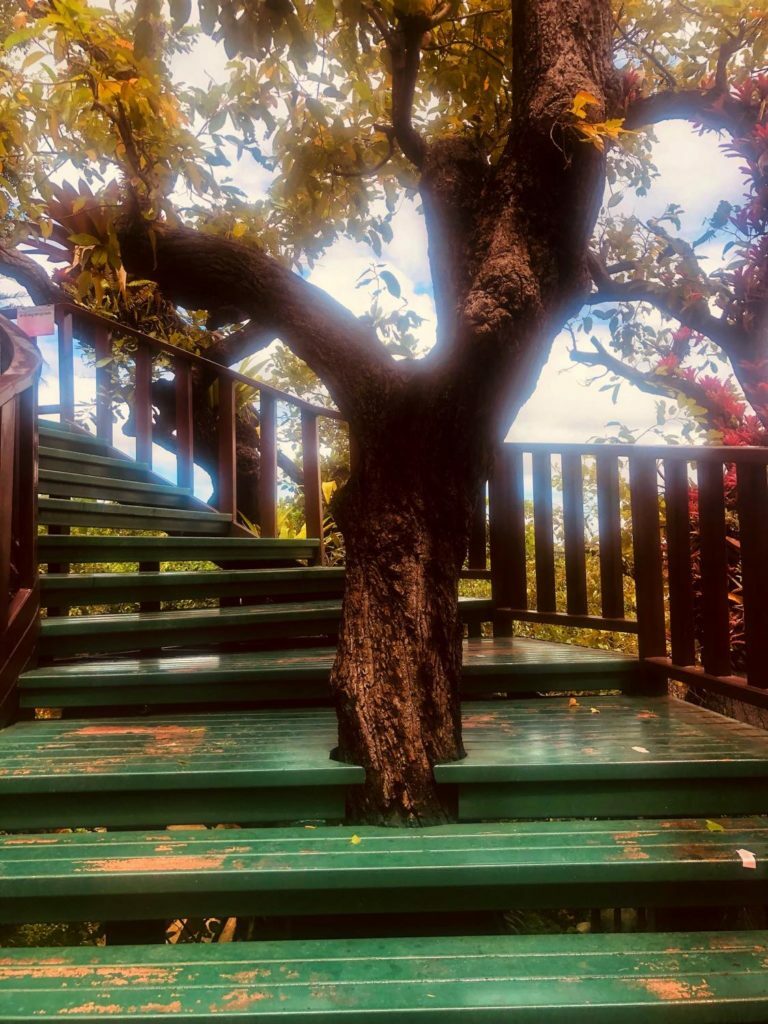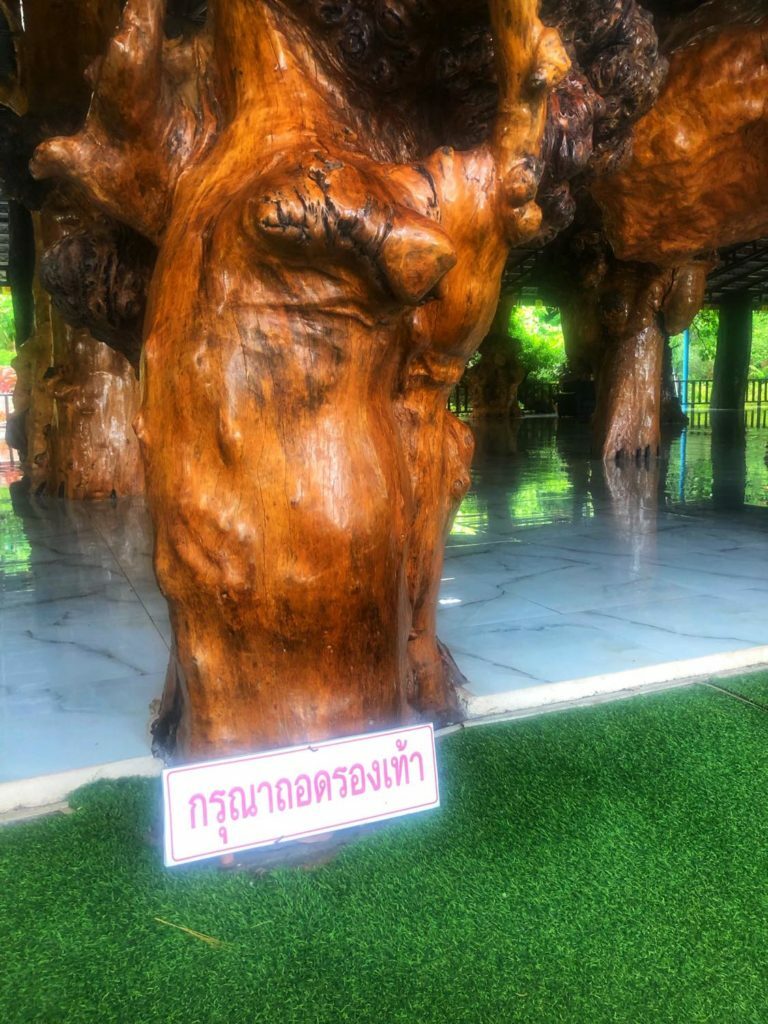Description
Wat Tham Pha Daen (วัดถ้ำผาแด่น) is located in the Phu Phan Mountain range, and only a 35 minute drive from downtown Sakon Nakhon. The famous temple offers some of the most stunning views in Sakon Nakhon, and the most fascinating Buddhist sculptures, statues, and carvings (in both wood and stone) in Thailand. It is many ways a Thai museum of sacred art, one of the most impressive you'll see in the Kingdom. Thus it should be on every tourist's list of must-see places when visiting Northeastern Thailand.
Wat Tham Pha Daen has vast temple grounds (over 1,100 acres). However, the temple complex for tourists covers only about 20 acres or so. At one time, you could drive up to the temple yourself, hike to the top of the mountain and wander through the forest trails. Today, you must park about 2 kilometers away from the temple, and the forest trails are no longer accessible, likely do to fear of people getting lost, especially children.
Navigating Wat Tham Pha Daen means walking over a combination of paved roads and multilevel garden platforms filled with shady trees, which makes it comfortable to walk around even during Thailand’s hot season. The history of this mountain temple stretches back hundreds of years, with many famous Northeastern monks, including Phra Ajahn Mun Phurithatto, having stayed here to meditate and study the Dharma.
However, the present temple sculptures and buildings began construction during the 1940s. Attractions include the famous Naga Prok Buddha sculpture (with dragon heads); rock cliff, teak wood, and sandstone carvings of the Buddha and famous monks, an old stone pagoda, scenic views of Sakon Nakhon, garden waterfalls, and unusually shaped tree trunks (100s of years old) used as pavilion pillars. To see a full photo gallery, please go to our: Wat Tham Pha Daen Photo Gallery.
After you walk through the beautiful garden entrance gateof Wat Tham Pha Daen, one of the first things you'll see is a large wood pavilion on your right. This pavilion contains ancient trees, teak wood carvings of Buddhist scenes and traditional Thai life, and a statue of Somdej Phra Maha Thirachan (สมเด็จพระมหาธีราจารย์), an important member of the Supreme Sangha Council, the governing board of Buddhist activities in Thailand. If you arrive to Wat Tham Pha Daen early, you may see monks eating there breakfast in this pavilion. If they are, you should wait until later to explore this pavilion, so as not to disturb the monks.
As you continue walking ahead, you'll see a path into the garden and woods. This is for the monks and not the tourists. Be aware of signs that say "ห้ามเข้า" which means "Don't Enter". The next thing you will likely encounter is a wall of ribbons, or Tung Sawan Cloth. This is an opportunity for visitors to make merit buy purchasing a ribbon for 20 baht, and then writing your name and birthplace on the ribbon to attach to the wall to receive a blessing.
Among the most popular attractions at Wat Tham Pha Daen are the sandstone carvings. In one of the pavilions, there is a stone wall with carvings of the Buddha in different poses. These poses depict stories of the Buddha's birth, enlightenment, and death. They also represent the days of the week in Thailand, as is displayed in the sign next to each Buddha carving.
After visiting the pavilion with the Buddha sandstone carvings, you'll see a crouching elephant beside a large stone sculpture of Luang Pu Thuat (also spelled Luang Por Tuad). Luang Pu is honored with the large stone sculpture because he is a highly revered monk who performed miracles during the 1600s, when Thailand was known as Siam. Amulets with the image of Luang Pu Thuat are very popular in Thailand, and are believed to hold great protective power, granting safe travels to the person as they go through life.
The signage next to the stone statue of Luang Pu Thuat, like many of the signs beside statues at Wat Tham Pha Daen, show incantations or prayers, which are to be repeated several times by worshipers, if would like to receive the blessing of the respective figure. Also you'll see incense (with lanterns), which one can burn to honor the figure, and a donation box in which you can place money to make merit.
As you continue your journey through Wat Tham Pha Daen, you'll come to a small pavilion on your left which has on display what appears to be a Thai family. These are statues of King Naresuan, Princess Suphankanlaya, King Ekathotsarot. All three figures are highly revered in Thailand for the roles they played during the Ayutthaya Kingdom of Siam history. And are viewed as semi-deities. The child in the row of statues is a novice monk.
In another pavilion, you'll find a large Buddha statue with a more quirky, non-traditional design, behind which are replicas of the famous Emerald Buddha that is housed at Wat Phra Kaew, located within the grounds of Bangkok's Grand Palace. There are three replicas, each donning a different dress that represents the rainy, summer, and winter seasons in Thailand.
Tourists websites sometimes talk about the "Sky Bridge" at Wat Tham Pha Daen. This bridge is more like a wide platform than an actual bridge. It is part of the large multi-level garden platform inside the temple complex. The bridge stretches between two large stone outcroppings, and from this vantage point, you can see Nong Han Lake and the entire province of Sakon Nakhon. Thus it is one of several places at the temple where you can take beautiful scenic photographs.
An iconic symbol of Wat Tham Pha Daen (which you can see from the highway when traveling toward the temple) is a gold pagoda on a golden rock, which sits atop a carved sandstone block of the Reclining Buddha. This pagoda signifies Phra Sumen (Mount Meru), which according to the Brahman and Buddhist legend is the Home of the Gods, a golden mountain that stands at the center of the universe and is the axis of the world.
At Wat Tham Pha Daen, you'll probably want to know more about the large statue of the Buddha being protected by a fierce looking 7 headed Naga dragon/serpent. This statue is called the Naga Prok Buddha (พระพุทธรูปนาคปรก). It was completed in 2019. The awe-inspiring sculpture stands 19 meters high. And from head to tail, it stretches an impressive 139 meters, the tail coiling protectively around the Buddha in 3 layers and then creeping along the crevices of the cliff.
The Naga Prok Buddha at Wat Tham Pha Daen goes by the special name Phra Phutthachai Racha (พระพุทธชัยราชา) or Phra Phuttha Maharaja Nakhabrirak (พระพุทธมหาราชานาคาบรีรักษ์). Sakon Nakhon (as well as neighboring Nakhon Phanom) have a special relationship with Naga serpents and are sometimes called Naga cities. This is due to their proximity to the Mekhong River, a birth place of Nagas. In addition, Sakon Nakhon is home to relics of the Buddha, as well as legendary monks who established the forest tradition of Thai Buddhism. These monks are thought to have been protected by Nagas in the forest, just as the Buddha was when a violent storm arose during his enlightenment and a 7 headed Naga emerged from the earth to protect him from the elements.
When traveling toward Wat Tham Pha Daen from a distance, you can see that the temple is divided into several layers on a cliff side. As you get closer, you'll eventually have to stop at a large parking lot, which also has food stalls and shops selling Thai clothing, hats, baskets, and other items. While it is free to enter the temple, there is a nominal fee to be driven from the parking area to temple, which is 2km away. Of course, we would also suggest making at least a small donation (even if its only 20 or 50 baht) to help with the maintenance of the temple, since you've been given a free opportunity to see and take photographs of it's fascinating Buddhist art and architecture.
If you are looking for another place to visit nearby, something off the beaten track and less of a tourist attraction, we might suggest a visit to one of our favorite small forest temples in Sakon Nakhon: Wat Ban Na Phang. Or if you want to experience another popular tourist destination, you should definitely check out the sacred Giant Turtle at Praya Tao Ngoi, which is about 25 minutes away.

